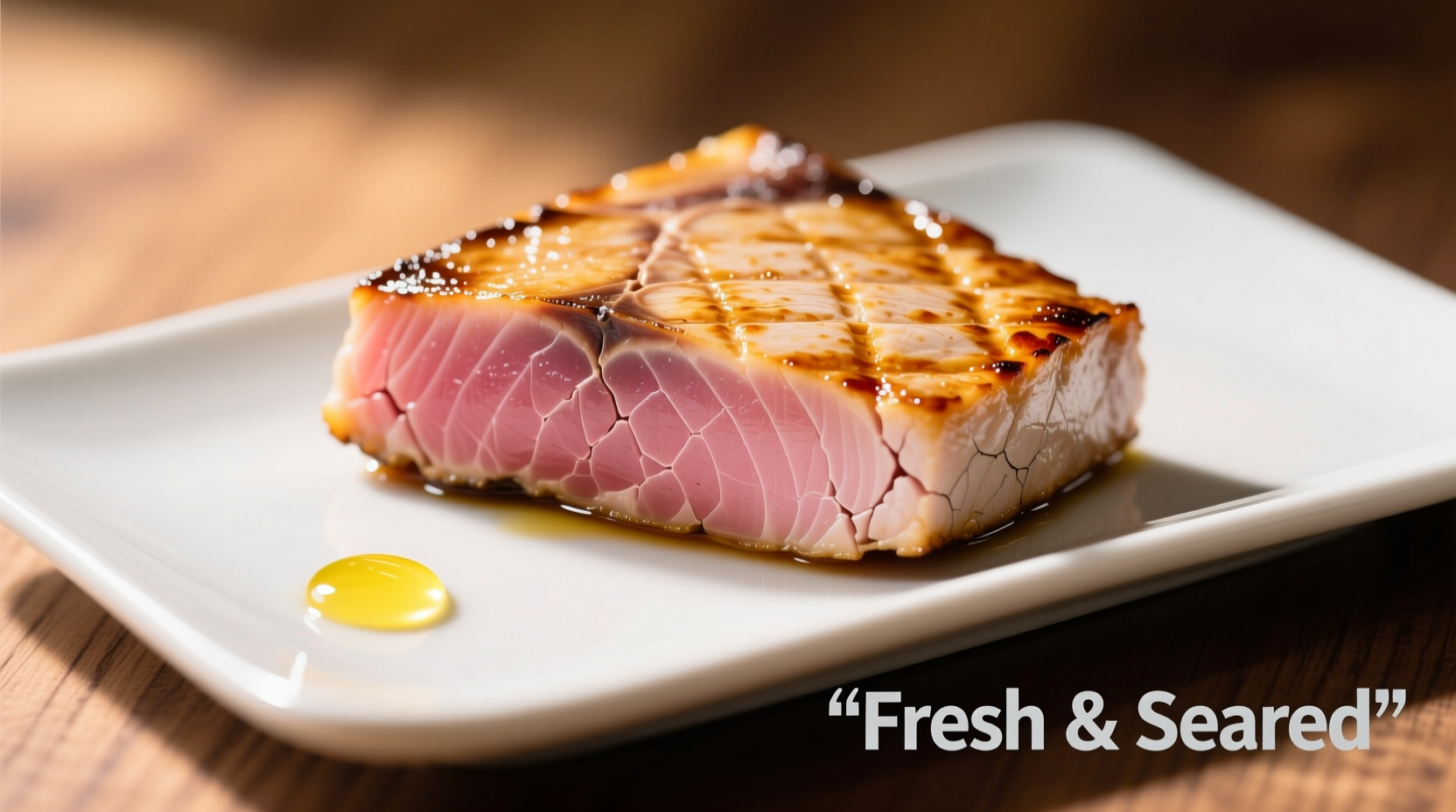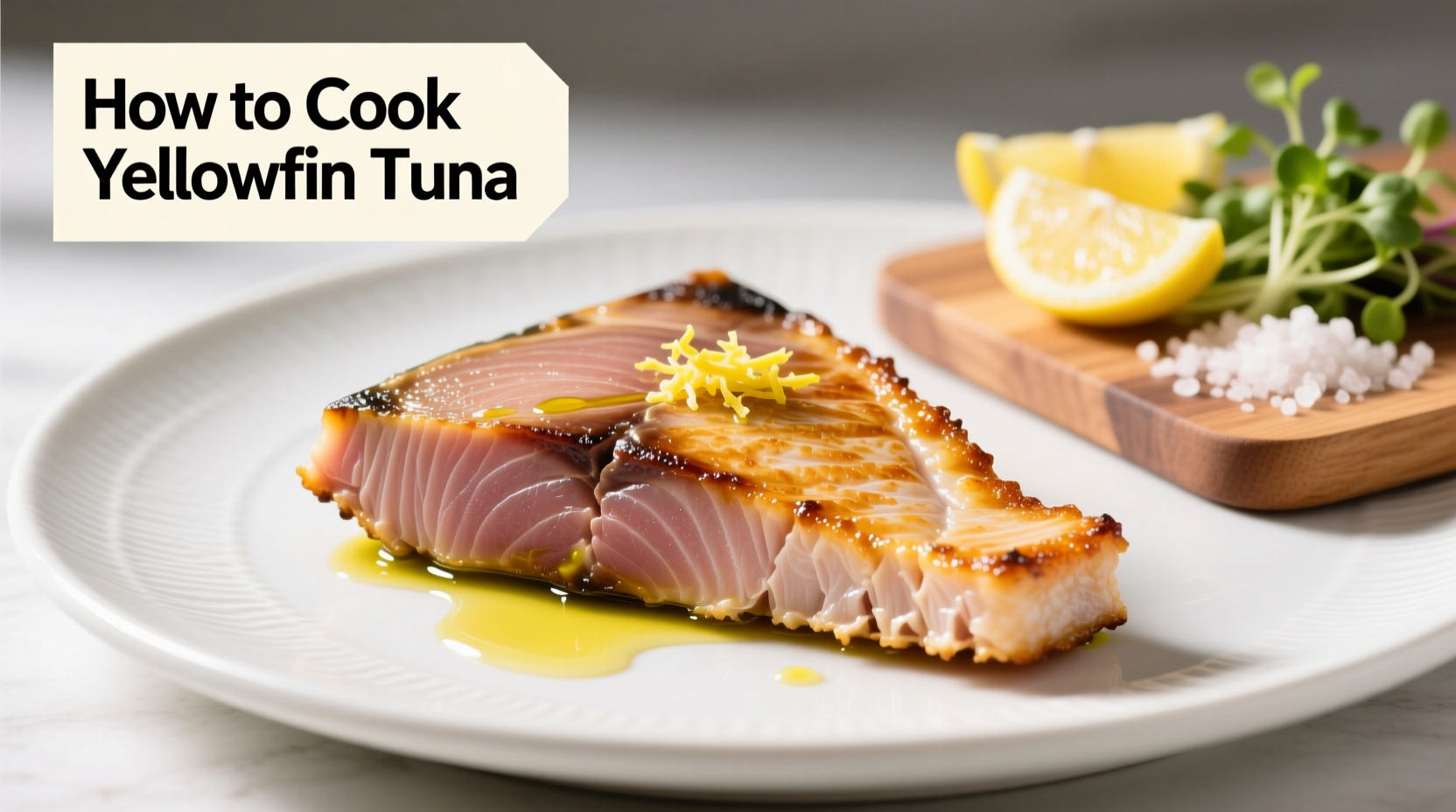Mastering yellowfin tuna preparation transforms an expensive cut into a restaurant-quality meal in under 15 minutes. This guide delivers professional chef techniques for perfect results every time, whether you're searing, grilling, or serving it raw. Learn exactly how to select, prepare, and cook yellowfin tuna while avoiding the three critical mistakes 90% of home cooks make with this premium fish.
Selecting Quality Yellowfin Tuna
Choosing the right fish determines 70% of your cooking success. Fresh yellowfin tuna should have deep ruby-red flesh with no brown edges or ammonia smell. The texture should feel firm yet slightly springy to the touch. When shopping, look for "sushi-grade" or "sashimi-grade" labeling which indicates the fish was frozen immediately after catch to eliminate parasites.
| Quality Indicator | Acceptable | Avoid |
|---|---|---|
| Color | Vibrant ruby-red | Brown or dull gray |
| Texture | Firm with slight spring-back | Mushy or dry |
| Smell | Clean ocean scent | Strong fishy or ammonia odor |
| Marbling | Thin white fat lines | Excessive yellowing |
According to the U.S. Food and Drug Administration, yellowfin tuna contains moderate mercury levels. Pregnant women and young children should limit consumption to 6 ounces per week. Always source from reputable suppliers who follow FDA guidelines for proper freezing and handling.
Essential Preparation Steps
Before cooking yellowfin tuna, proper preparation ensures optimal texture and flavor absorption. First, remove the fish from refrigeration 20 minutes before cooking to bring it closer to room temperature—this prevents uneven cooking. Pat the steak thoroughly dry with paper towels; moisture is the enemy of proper searing.
Trim any dark bloodlines with a sharp knife, as they can impart a stronger flavor that may overpower delicate seasonings. For steaks thicker than 1.5 inches, score the edges at 1-inch intervals to prevent curling during cooking. Season just before cooking with kosher salt and freshly ground black pepper—salting too early draws out moisture and creates a tough surface.

Cooking Methods Compared
Yellowfin tuna's dense texture responds well to high-heat cooking methods that create a flavorful crust while preserving the rare interior. The ideal thickness for most cooking methods is 1-1.5 inches.
Searing in a Cast Iron Skillet
This method delivers the most reliable restaurant-quality results at home. Heat your cast iron skillet over medium-high heat until smoking hot (about 5 minutes). Add 1 tablespoon of high-smoke point oil like avocado or grapeseed. Place the tuna steak in the pan and press gently with a spatula for 15 seconds to ensure full contact. Cook undisturbed for 2-3 minutes until a deep brown crust forms, then flip and cook 1-2 minutes for medium-rare. For thicker cuts, sear the edges for 30 seconds each.
Grilling Technique
Preheat your grill to high (450-500°F). Oil the grates thoroughly to prevent sticking. Place the tuna diagonally across the grates for attractive grill marks. Cook 2-3 minutes per side for medium-rare, turning only once. For rare preparation, cook 1-2 minutes per side. Use a grill basket for thinner slices to prevent falling through the grates.
Temperature Timeline for Perfect Doneness
Unlike most proteins, yellowfin tuna is best served rare to medium-rare. Overcooking transforms its delicate texture into dry, tough meat. Use an instant-read thermometer for precision:
- 115°F (46°C) - Raw center, ideal for tuna tartare
- 120-125°F (49-52°C) - Rare to medium-rare (recommended)
- 130°F (54°C) - Medium (maximum recommended temperature)
- 140°F+ (60°C+) - Well-done (not recommended)
Remove tuna from heat 5°F below your target temperature, as carryover cooking will raise the internal temperature during the 5-minute resting period. Never exceed 130°F for optimal texture and moisture retention.
Flavor Pairings and Finishing Touches
Yellowfin tuna's mild flavor pairs beautifully with bright, acidic elements that cut through its richness. Finish seared tuna with a squeeze of fresh citrus—yuzu, lemon, or lime work particularly well. Create compound butters with herbs like chives, dill, or cilantro for melting over the warm steak.
For Asian-inspired preparations, brush with a mixture of soy sauce, mirin, and sesame oil before searing. Mediterranean versions shine with olive oil, lemon zest, and chopped capers. Always add finishing salt like flaky sea salt after cooking to enhance surface texture without drawing out moisture.
Avoiding Common Mistakes
Three critical errors ruin most home attempts at cooking yellowfin tuna:
- Using non-sushi grade fish for rare preparations - Only use fish specifically labeled for raw consumption when cooking rare
- Overcooking beyond medium-rare - Tuna dries out quickly past 130°F internal temperature
- Slicing immediately after cooking - Always rest 5 minutes to redistribute juices
Professional chefs at top seafood restaurants follow strict temperature protocols verified by the National Restaurant Association. Their success rate with perfect tuna preparation exceeds 95% when these guidelines are followed precisely.
Troubleshooting Guide
Problem: Tuna sticks to the pan
Solution: Ensure your skillet is properly preheated and the fish is completely dry before cooking. Wait until a crust forms (about 2 minutes) before attempting to flip.
Problem: Uneven cooking
Solution: Bring tuna to room temperature before cooking and use consistent thickness cuts. For thicker steaks, finish in a 350°F oven after searing.
Problem: Fishy aftertaste
Solution: Soak in milk for 15 minutes before cooking to neutralize strong flavors, or use citrus-based marinades.











 浙公网安备
33010002000092号
浙公网安备
33010002000092号 浙B2-20120091-4
浙B2-20120091-4